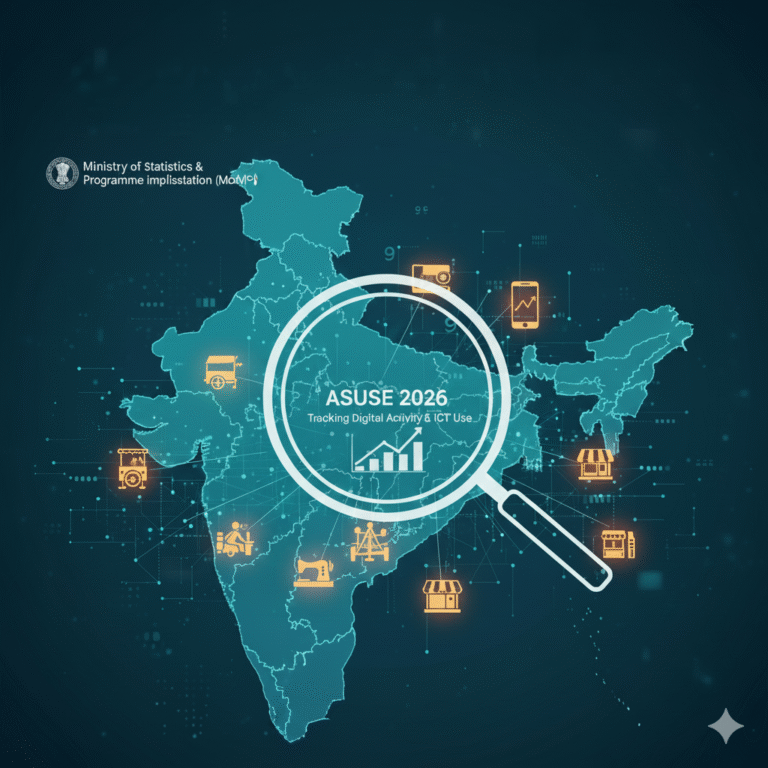In the digital age, semiconductors are the pulsing heart of every innovation—from smartphones and electric vehicles to AI and defense. Global disruptions, rapid digitalization, and a growing technology sector have placed chip supply chains in the spotlight. In response, India is charting bold new territory with its India Semiconductor Mission (ISM). Unveiled in December 2021 with a staggering ₹76,000 crore (approximately $10 billion) budget, ISM aims to overhaul the landscape of semiconductor manufacturing, design, and research across the country.
Within just a few years, India’s push is yielding results: Six major projects are underway, international players are entering the market, and workforce initiatives are set to train tens of thousands in chip design and VLSI (Very Large Scale Integration). The result? India is on track to become a significant—if not indispensable—force in the global semiconductor ecosystem.
Why Semiconductors—and Why Now?
- Critical Supply Chains: Chips are essential for strategic sectors—defense, aerospace, telecom, health, and next-gen vehicles.
- Global Shortages: Pandemic-era disruptions and geopolitical frictions exposed vulnerabilities when chip supply from outside collapsed.
- Digital India: Ambitious projects—5G, IoT, electronics manufacturing—need secure, reliable chip supply.
- Economic Opportunity: Semiconductor manufacturing creates high-value jobs, upskills talent, and reduces import dependencies.
What is India Semiconductor Mission (ISM)?
Launched in December 2021, ISM is a government-backed, industry-driven program under the Ministry of Electronics and IT aiming to:
- Build and scale fabrication units (fabs) for chipmaking.
- Boost advanced packaging, testing, and design.
- Foster robust R&D and intellectual property development.
- Nurture a global-standard workforce in VLSI, embedded systems, and EDA (Electronic Design Automation) tools.
Budget
- ₹76,000 crore (~$10 billion)—among the largest state-backed semiconductor programs outside East Asia.
Major Projects Lighting Up India’s Chip Scene
India’s semiconductor landscape is getting a rapid facelift, thanks to multiple high-profile projects:
1. HCL-Foxconn (Uttar Pradesh)
- Joint venture aiming to build a modern chip fabrication facility.
- Focus: Mid-to-high end chips for consumer electronics and automotive industries.
2. Tata Electronics (Gujarat)
- State-of-the-art 28nm fab in Dholera, Gujarat—targeting automotive and industrial chips.
- Tata also pursuing OSAT (Outsourced Semiconductor Assembly and Test) units in Assam.
3. Micron in Gujarat
- U.S. giant Micron committed to a large investment in a memory packaging and assembly plant.
4. Promising Design Parks
- Karnataka and Telangana are becoming hubs for global semiconductor design, leveraging government incentives.
5. Global Partnerships
- Lam Research: Launched a training center for semiconductor fabrication tools.
- NXP, AMD, Synopsys, MediaTek: Ramping up their Indian design/R&D centers.
These moves mark India’s transition from a market dependent on imports to a destination for both chip making and design.
The Workforce Revolution: Training India’s Next-Gen Chip Talent
A country can’t lead in semiconductors without engineers who can design, test, and manufacture at the cutting edge. ISM is keenly aware and has embedded academic–industry partnerships at the heart of its strategy:
Key Initiatives
- VLSI & Embedded Systems Programs: Premier institutes (IITs, NITs, IISc) collaborate with industry to offer hands-on courses, R&D labs, and real-world projects.
- Design Automation (EDA) Training: Industry players like Cadence, Synopsys, and Arm provide tools and training to Indian engineers.
- Skill Development: Tens of thousands of students to be trained in chip design, EDA, packaging, and semiconductor manufacturing every year.
- National Apprenticeships and Internships: Direct absorption of fresh talent into India’s emerging chip hubs.
The aim: Build an ecosystem where “Made in India” chips are designed, made, and tested by homegrown innovators.
Policy, Infrastructure, and Incentives: What Sets ISM Apart
- Liberal Incentives: Up to 50% subsidy for capex (capital expenditure) on new fabs; generous fiscal and tax breaks.
- Plug-and-Play Infra: Industrial corridors, power and water security, high-speed logistics for chip plants.
- Single-Window Clearances: Streamlined bureaucracy for faster setup of fabs and design parks.
- IP/Patent Support: Assistance for Indian startups and researchers in chip IP generation.
ISM’s Big Picture: Building a Full Semiconductor Ecosystem
Unlike past attempts focused on one link (assembly or design), ISM is about a comprehensive “chip-to-market” ecosystem:
- Manufacturing: Foundry-scale fabs for logic, memory, and analog chips.
- OSAT/ATMP: World-class assembly, testing, marking, and packaging facilities.
- Design and R&D: Linking India’s design talent with global giants.
- Suppliers and Ancillaries: Chemical, wafer, equipment, and logistics supply chains.
- Academic Research: Funding for next-gen materials, hardware security, green chip tech.
India’s Global Semiconductor Ambition: Challenges and Opportunities
Opportunities
- Demographic Dividend: 1.5 million engineers graduate every year—the world’s largest STEM talent pool.
- Electronics Demand: India is among the fastest-growing electronics and EV markets globally.
- Strategic Partnerships: Collaboration with Japan, U.S., Taiwan, and Europe to leapfrog in innovation.
Key Challenges
- High Capex, Long ROI: Chip fabs cost billions and take years to show returns.
- Supply Chain Dependencies: Certain raw materials and machinery are still imported.
- IP & Talent Retention: Global talent wars could lure engineers abroad.
- Geopolitical Barriers: Tech trade restrictions and export bans pose risks.
What’s Next? Future Roadmap for India’s Chip Dreams
- Execute existing fab and OSAT projects on schedule.
- Scale industry–academia programs to deepen the pool of VLSI and hardware experts.
- Woo more global OEMs and fabless giants for both manufacturing and design partnerships.
- Prioritize sustainability—water recycling, green processes, and energy efficiency in fabs.
- Build opportunities for Indian startups in chip design and EDA software.
The Semiconductor Moment is Now
Through bold vision and smart execution, India’s ISM is transforming the nation from a passive chip importer to an active architect in the global semiconductor order. With robust investment, talent development, and global alliances, India is not just closing the gap—it’s racing ahead. The real question is not “if” but “how fast” Indian chips will shape the world’s digital future.









+ There are no comments
Add yours